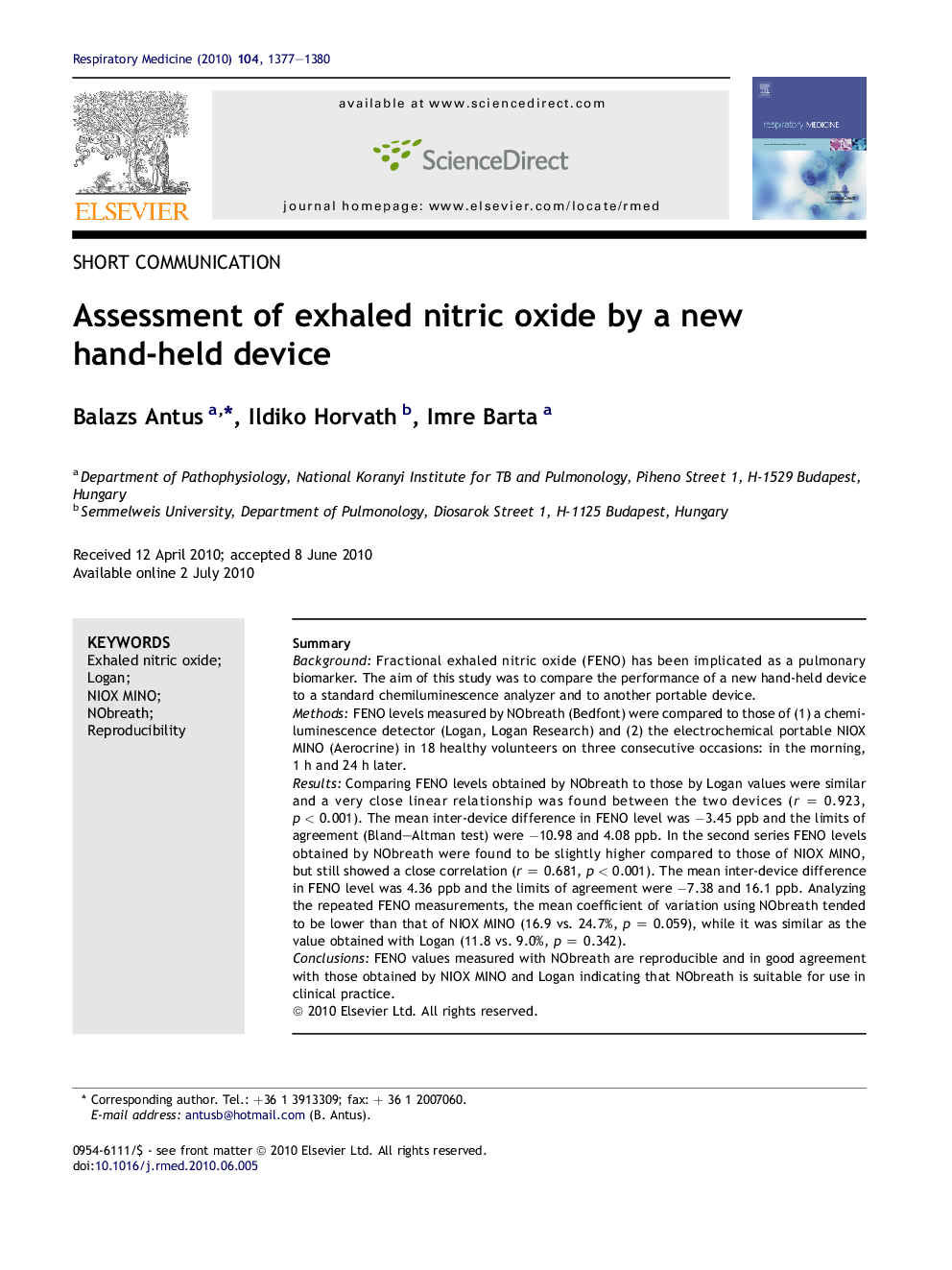| Article ID | Journal | Published Year | Pages | File Type |
|---|---|---|---|---|
| 4211969 | Respiratory Medicine | 2010 | 4 Pages |
SummaryBackgroundFractional exhaled nitric oxide (FENO) has been implicated as a pulmonary biomarker. The aim of this study was to compare the performance of a new hand-held device to a standard chemiluminescence analyzer and to another portable device.MethodsFENO levels measured by NObreath (Bedfont) were compared to those of (1) a chemiluminescence detector (Logan, Logan Research) and (2) the electrochemical portable NIOX MINO (Aerocrine) in 18 healthy volunteers on three consecutive occasions: in the morning, 1 h and 24 h later.ResultsComparing FENO levels obtained by NObreath to those by Logan values were similar and a very close linear relationship was found between the two devices (r = 0.923, p < 0.001). The mean inter-device difference in FENO level was −3.45 ppb and the limits of agreement (Bland–Altman test) were −10.98 and 4.08 ppb. In the second series FENO levels obtained by NObreath were found to be slightly higher compared to those of NIOX MINO, but still showed a close correlation (r = 0.681, p < 0.001). The mean inter-device difference in FENO level was 4.36 ppb and the limits of agreement were −7.38 and 16.1 ppb. Analyzing the repeated FENO measurements, the mean coefficient of variation using NObreath tended to be lower than that of NIOX MINO (16.9 vs. 24.7%, p = 0.059), while it was similar as the value obtained with Logan (11.8 vs. 9.0%, p = 0.342).ConclusionsFENO values measured with NObreath are reproducible and in good agreement with those obtained by NIOX MINO and Logan indicating that NObreath is suitable for use in clinical practice.
